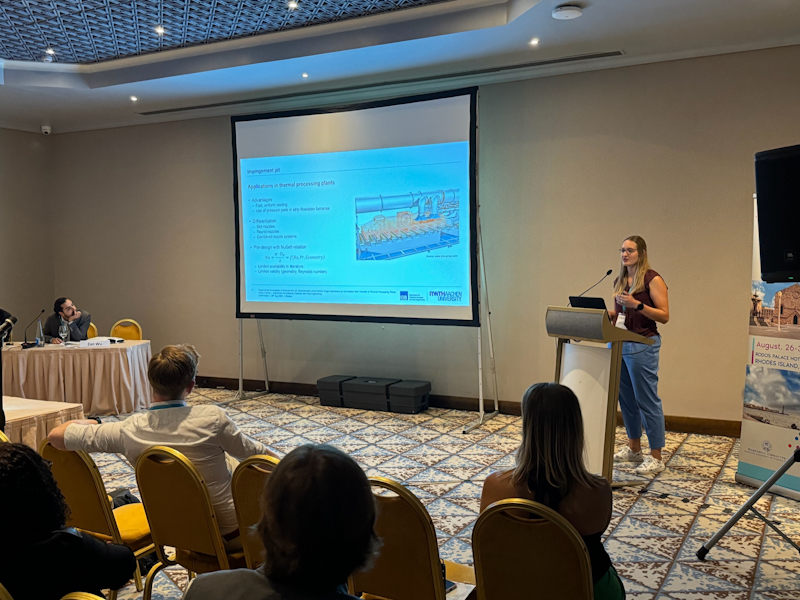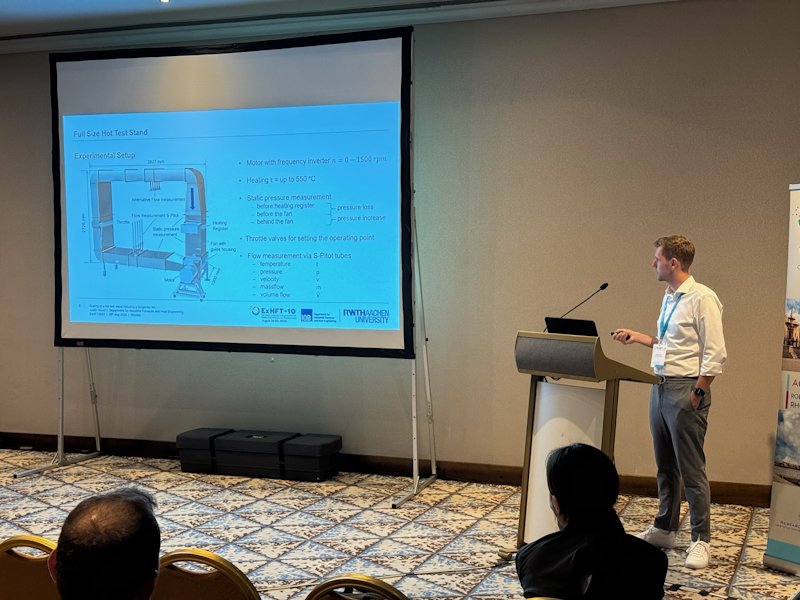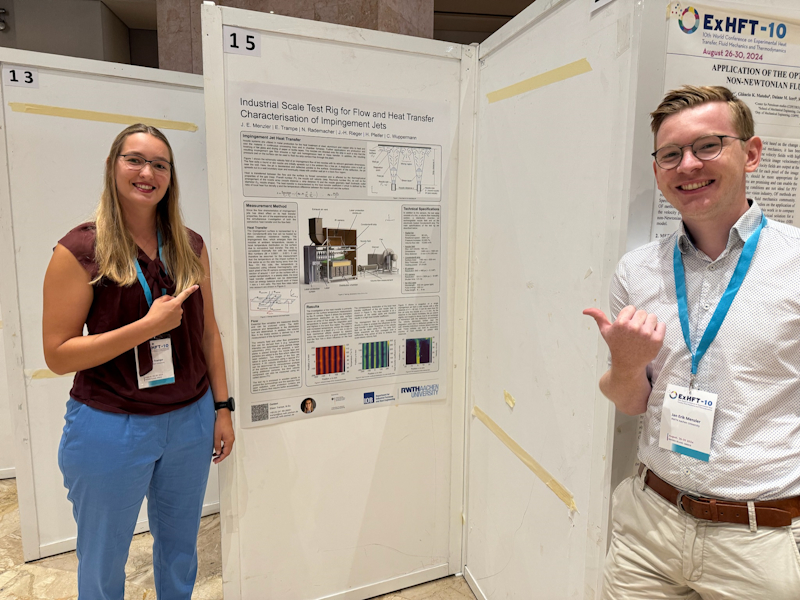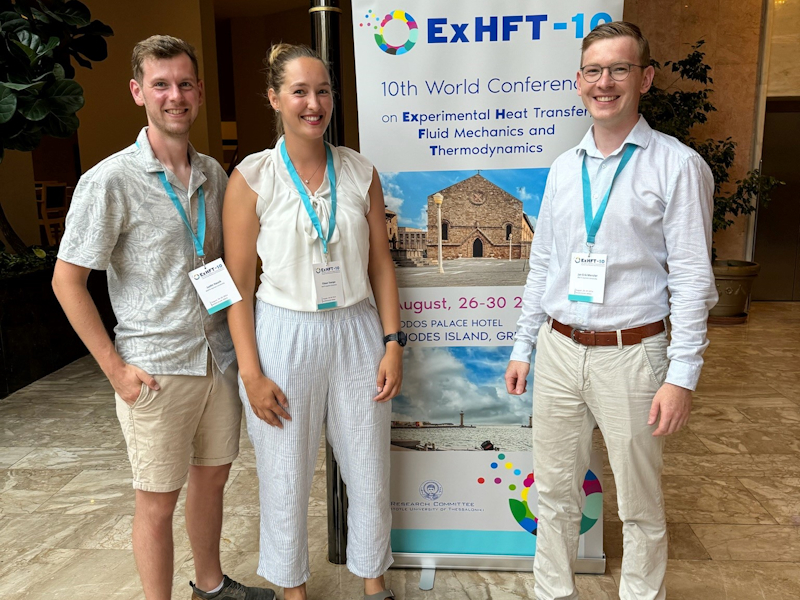The 10th Conference on Experimental Heat Transfer, Fluid Mechanics and Thermodynamics (ExHFT) took place on the Greek island of Rhodes from 26 to 30 August 2024. The Institute of Industrial Furnace and Heat Engineering was represented there with three contributions.
At the conference, scientists and engineers from all over the world presented their latest research results. Experimental results and methods from the fields of heat transfer, fluid mechanics and thermodynamics were presented in over 100 lectures and on more than 40 posters. The conference focussed on basic research and the development of new measurement methods or the expansion of the application areas of existing measurement methods.

Eileen Trampe presented a paper on the investigation of impact jets using Particle Image Velocimetry (PIV). Her research aims to better understand the flow dynamics and heat transfer properties of impact jets. In the further course of her project, the measurement data will be used to develop a numerical model of the flow and heat transfer of impact jets.

Justin Hauch presented his paper, which deals with the investigation of scaled fans in a similarly scaled test rig. The advantage of investigating small-scale fans, taking into account the geometric and fluid mechanical similarity, is that small fan prototypes can be quickly produced and measured as 3D-printed models. A special feature of the scaled test rig is that fans that actually convey air or other gases are analysed in water. This reduces the required speed of the test objects and thus their mechanical load.

Jan Menzler presented a poster about the deparment’s impact jet test rig, which is used for Eileen’s research on impact jets, among other things. The test rig can be utilised to investigate nozzle fields or impact jets on an industrial scale using several experimental methods simultaneously. The presentation offered a practical insight into the research infrastructure and the possibilities of the IOB.

The conference enabled the exchange of the latest scientific findings as well as networking opportunities with colleagues from various fields. The contributions of our colleagues helped to increase the visibility of the department at an international level.

